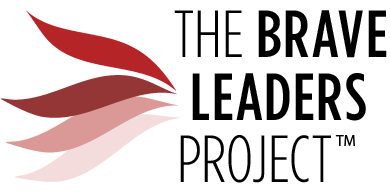Innovation and Change Require a Culture of Courage. Here’s How to Build One
It's now been four months since we all started scrambling to adapt our business routines due to the pandemic. What may have seemed like a temporary fix is starting to feel a little more permanent, and this thought can be unsettling. As an executive coach, I hear executives calling on their leaders — and their entire workforce — to be more creative and innovative. And not just in order to survive, but to take advantage of the surprising opportunities this unique time can bring. Take Dyson, which managed to shift from producing vacuum cleaners to ventilators in just 10 days.
But simply calling for change doesn’t mean it will actually happen. And it certainly doesn’t mean your organization will survive a transition—unless your culture already supports it.
Think about that. Do your employees believe that they are welcome to suggest real change?
In late 2019, I attended a client’s national sales meeting. During the keynote, an executive called on an audience of hundreds to “be brave, speak up, and help us design the next decade.” An intrepid hand shot up. “Are you suggesting that I tell my boss that I don’t agree with the current plan?” The executive answered yes, and a wave of nervous laughter rippled through the room.
If you think the Pandemic changes things, think about the following pre-COVID-19. If one of your employees found a way to reduce costs by 10%, but it would mean changing everything about the way you do business, would they feel safe to tell their boss about it?
Or, what if one of your managers learned about a serious safety issue that would cost millions to correct, but knew the company’s quarterly earnings call was just a week away? Would they hesitate to tell you about it immediately?

The Importance of Having a Culture of Courage
This is where culture comes in. Particularly, a culture that rewards courage. Because it takes courage to raise topics that may make the boss unhappy, even temporarily. Most people are risk-adverse. They default to safety. They take comfort in the status quo, even when the consequences can be dire.
So if your team is anything less than 100% sure that their ideas are welcomed and valued – even when they have downsides – they probably will default to safety. As a result, important information may never reach you.
By the same token, it’s unlikely that your team will embrace the change you advocate for. Because that, too, means leaving the status quo.
To be clear: I am not talking about safe, incremental change. I am talking about radical, transformative change, which is what many of us will need, to come out of this crisis ahead. And this kind of change takes more than one visionary, brave leader. It takes a brave organization.
How to Build a Brave Organization
So how do you build an organization like that? Again, it all comes down to creating a culture that embraces courage. This takes intentional work, both at the organizational level and at the personal level.
Start with Values
Values are the heartbeat of your organization’s culture. When they align with each employee’s personal values, it creates an atmosphere of trust that improves loyalty, decreases turnover, and makes everything else possible. Here are some ways to achieve this:
√ Communicate your organization’s values. We often see them posted in common areas around plant and headquarter locations, but it’s crucial to give them life, not lip service. If you put customer safety above profit, as Tylenol did in the ‘80s, you pull millions of dollars-worth of product from the shelves before understanding that just a few bottles were tampered with. In the process, you recover the business and earn even more customer loyalty.
√ At the personal level, encourage self-awareness. Foster a workforce that asks, “Does this feel right? Are we doing what I believe we should be doing?” If the answer is no, it’s time to change things.
Make It Safe
It’s one thing to know the answer is no. Employees need to feel safe enough to actually speak up, and creating that safety takes work. It takes showing as much respect for those who raise red flags and offer differing opinions, as for those who have the highest sales or invent a new product. When change is seen as an opportunity rather than a threat, people will feel freer to be creative and innovative. Here are some ways to achieve this:
√ At the organizational level, insist that feedback is a standard part of every process. Put it on the agenda or a checklist.
√ Ask managers to share with their teams how they check in with their own values, and encourage the entire workforce to speak up when those don’t align. Repeat this message as much as possible.
√ Do not save feedback for quarterly check-ins or annual reviews. Problems and issues simply feel too big by then. A manager who solicits and invites feedback consistently is in a better position to catch fires while they’re small. It will help them adjust misaligned values before big mistakes are made, and to take early action. Suggestion boxes are not “feedback.”
Download our 10 best practices for creating a culture of feedback here. It’s free.
Demonstrate Humility
You may have the highest IQ in the room. You may be the preeminent subject matter expert. But if you were able to run the business by yourself, you wouldn’t have employees. When our leaders welcome diverse points of view, when they invite us to challenge their decisions, we feel respected, valued, and engaged. We’re inspired. We’re more willing to accept your decision, even if we disagree. Here are some ways to achieve this:
√ Openly invite all points of view. Suspend judgment. Ask questions to understand. You don’t need to change your mind (although you might), but you gain buy-in and reduce resistance to change.
√ Make everyone the CEO! Not everyone can be a leader with a capital “L,” but every employee can be given the freedom to take charge of their own area, be it a sales territory or an aisle in the grocery store. Remind them that, in that space, they have the opportunity and ability to effect change. There is always room for innovation and inspiration!
Be the Brave Leader, Every Day
Set the example. Implement the suggestions we’ve provided and go easy on yourself when you don’t. The brave demonstrate compassion – for themselves and others. Here’s how:
√ Compose yourself. We all have bad days. We all have people and situations that trigger us. The best thing we can do when we’re triggered is pause. Simply stop and take a breath. Then another. Mentally regroup.
√ Improve your self-awareness. The above suggestions for creating a culture of brave leaders are not revolutionary. Individually, any one of them will make a positive difference. But taken together, they will have a powerful impact. It’s a matter of practice; of replacing old habits with new ones. We are huge fans of the benefits of journaling for leadership development – more and more studies are confirming that it is a powerful tool for growth, not to mention its most basic benefit, the ability to reduce stress and improve well-being. For more on that, download this free tip sheet.
Your organization, like many, may already have several of these best practices in place, but fall just short of creating a culture that supports change because the practices aren’t prioritized, organized or emphasized. Talk with your leaders to gain their understanding about the importance of these practices and make them daily habits.
Consider a motivational keynote or workshop from the experienced coaches at The Brave Leaders Project today.

